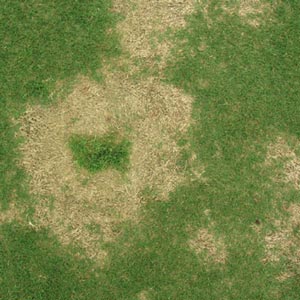Spring Dead Spot: Are You at Risk?
29
OCTOBER, 2018
DIY
Maintenance
Spring Dead Spot is a fungal pathogen that appears just as the name would suggest. If you’ve noticed spots in your lawn that look like bleached patches, it could be Spring Dead Spot. Keep in mind that the spots are just the symptom and you need to treat the problem first.
The spots range from 1cm to 1m in diameter and are a result of the lawn disease attacking the roots. The roots then rot, becoming brown or even black. Spring Dead Spot is typically a spring problem, but it can occur in autumn or winter. It loves the cooler temperatures and extra moisture.
Luckily for most lawn owners, Spring Dead Spot is quite picky. It almost exclusively affects Couch varieties of grass. Sometimes, it will settle for Zoysia but rarely Buffalo or Kikuyu lawns. The problem for Couch varieties is that they’re cared for so intensively. They’re mowed low and frequently. Being such manicured lawns, they provide the ideal conditions for this disease.


So, how do you combat this problem? It can be quite difficult as the lawn patches will already dead. First, look at your soil quality. Fix any compaction, high thatch levels or low potassium levels. After addressing these, you should have better drainage and Spring Dead Spot won’t be able to keep affecting your lawn. After this, it will take some time as the grass will need to regrow over the dead areas.
You can also consider fungicides. A broad-spectrum fungicide can help you to prevent Spring Dead Spot but if your lawn is already affected, the fungicide will only treat the symptoms.
Check if your lawn needs aerating every year to avoid poor drainage and reduce the risk of Spring Dead Spot and other diseases. With some TLC and time, your lawn will be able to recover and be back to normal.
Recommended for you...
Poolside Turf: Choosing and Maintaining Grass Around Pools
There’s nothing quite like stepping out of a swimming pool onto soft, lush grass. But when it comes to finding the best grass for around a pool, not all lawns are created equal. Chlorine pools, heavy foot traffic, and the unforgiving Australian sun can take a toll on...
The Best Parks & Playground Turf for Kids, Pets & Families Across NSW
Creating safe, welcoming, and enjoyable community spaces starts from the ground up. Whether it’s a local dog park, an outdoor playground turf project, or a family BBQ area, choosing high-quality natural grass makes all the difference. Natural grass doesn’t just look...
Keeping Your Lawn Green and Healthy During the Summer Heat
Discover the best grass options for your lawn with our complete guide. Make informed choices for a lush, healthy yard. Read more to find your ideal grass!



